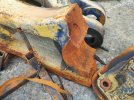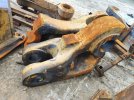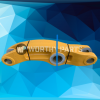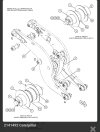Hello everyone,
I'm seeking advice and insights on repairing a tilt lever failure in an underground loader. Specifically, I want to know if welding is a viable solution for this type of failure. Has anyone had experience with welding a failed tilt lever? What are the considerations and best practices to ensure a successful repair? Any recommendations or alternative solutions are also welcome.
Thank you!
I'm seeking advice and insights on repairing a tilt lever failure in an underground loader. Specifically, I want to know if welding is a viable solution for this type of failure. Has anyone had experience with welding a failed tilt lever? What are the considerations and best practices to ensure a successful repair? Any recommendations or alternative solutions are also welcome.
Thank you!





